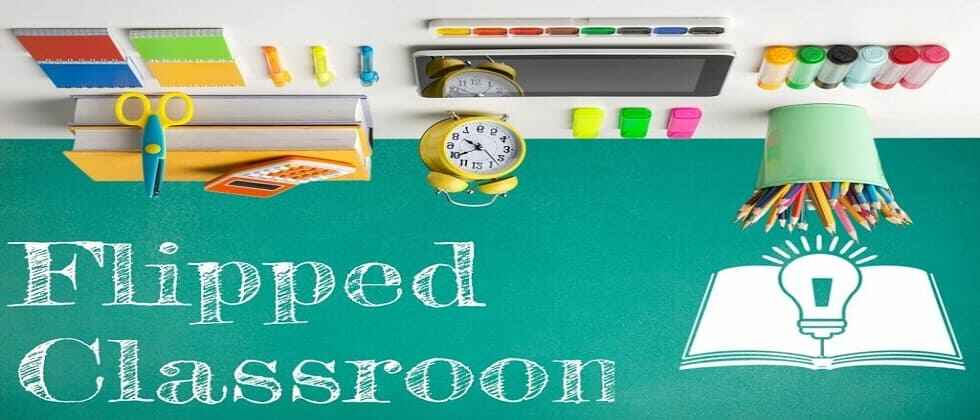The flipped classroom is an instructional model that is rapidly gaining popularity in schools and universities. In a flipped classroom, students gain first exposure to new material outside of class, usually through reading or lecture videos, and then use class time to discuss the material, work through problems, advance concepts, and engage in collaborative learning activities. This “flipping” of traditional learning offers many benefits for both students and teachers.
What is a Flipped Classroom?
A flipped classroom model reverses the traditional learning environment by delivering instructional content outside of the classroom, often through videos, readings, or interactive online modules.
Class time is then used to engage students in learning activities that encourage higher-order thinking such as problem-solving, discussions, collaborations, debates, and projects.
Students gain the necessary knowledge beforehand so that they can actively apply concepts, collaborate with peers, and strengthen their critical thinking abilities in a dynamic classroom setting.
Four Key Pillars Of The Flipped Classroom Model
The whole concept of Flipper classroom model depends on 4 major pillars which are:
- Provide video lectures and content for students to access before class.
- Use active in-class learning strategies such as discussions, projects, or labs.
- Offer students opportunities to interact and reflect on ideas.
- Give students greater responsibility for managing their learning.
Benefits of the Flipped Classroom Model
The flipped classroom offers many potential benefits for students and teachers:
Benefits for Students
- Promotes active learning and higher student engagement during class.
- Allows students to learn at their own pace through pre-recorded video lectures.
- Provides opportunities for struggling students to pause videos and rewatch concepts.
- Increases one-on-one interaction with the teacher during class activities.
- Encourages students to take responsibility for their own learning.
- Allows for customized and personalized learning.
- Accommodates different learning styles and needs.
Benefits for Teachers
- Frees up class time for hands-on activities, discussions, and collaboration.
- Provides better opportunities to detect student misconceptions and difficulties.
- Gives teachers improved insight into student progress and learning needs.
- Allows teachers to provide targeted interventions, remediation, and support.
- Increases student-teacher interaction and relationship building.
- Facilitates deeper exploration of topics of student interest.
- Enables quicker feedback loops through formative assessments.
How To Implement A Flipped Classroom?
Implementing a flipped classroom model takes thoughtful planning. Here are some key guidelines for teachers looking to “flip” their classes:
- Plan to engage in-class activities: Active learning should be the primary focus of class time, through strategies like problem-based learning, discussions, games, case studies, or labs.
- Create high-quality video lessons: Short 5-15 minute video lectures capture key concepts effectively. Videos should be concise, focused, and student-friendly.
- Provide pre-class learning materials: Share readings, videos, presentations, or quizzes for students to review before class. Provide guide questions or learning objectives. You can also use good learning management solutions to provide study material to the students.
- Explain expectations clearly: Students should understand all flipped classroom components and expectations beforehand. Clarify how to access materials, complete pre-class work, and evaluate readiness for in-person sessions.
- Make content accessible: Ensure all students can access online resources. Provide options for students lacking technology access.
- Assess student understanding: Use comprehension checks, quizzes, or assignments to gauge student understanding of pre-class content. Adjust in-class activities accordingly.
- Be flexible: Be open to modifying the model over time based on student feedback and lessons learned.
- Manage student expectations: Support students in transitioning to a more self-directed learning model. Communicate frequently about how to succeed in the flipped approach.
Flipped Classrooms by Subject
The flipped classroom model can be effectively used across many grade levels and subject areas:
- Mathematics: Students watch video lectures with example problems and then class time is used for working through problems collaboratively, with peer assistance, and teacher guidance.
- Science: Students watch videos explaining key experiments at home and then conduct hands-on experiments, lab activities, or engage in science practices in the classroom.
- English/Language Arts: Students read a text selection or view a related video lecture before class. Teachers then facilitate deeper text analysis, discussion, and writing workshops during class.
- Social Studies: Students access online readings, lectures, or multimedia content focused on a historical period or event. In class, teachers guide application activities like document analysis, debates, dramatizations, or project-based learning.
- World Languages: Students learn vocabulary and grammar rules through interactive online lessons as homework. Class time focuses on conversational practice through learning games, group tasks, and speech presentations.
Benefits for Different Types of Learners
The flipped classroom provides benefits for diverse learners:
- Visual learners can pause and rewatch video lectures to absorb key information.
- Auditory learners benefit from classroom discussions, debates, and peer interactions.
- Kinesthetic learners gain hands-on engagement through interactive classroom activities requiring movement.
- Students with disabilities can learn at their own pace and review content as often as needed. Teachers also have more time for individualized interventions and support in class.
- Struggling students receive greater teacher attention in class and peer support for difficult concepts. Advanced students are also able to progress faster through the material.
- ELL students can utilize provided resources (videos, readings) to build background knowledge at their own pace. The focus shifts from lecturing to individualized practice and application.
Moving Towards Student-Centered Learning
At its core, the flipped classroom facilitates a transition from teacher-centered instruction to student-centered learning. Students gain more autonomy over their education by:
- Controlling the pace and schedule of initial learning through pre-recorded video lectures that can be paused, replayed, and reviewed.
- Taking notes and developing their own questions based on video lectures and provided materials.
- Gaining practice with key academic skills such as time management, self-discipline, organization, and self-directed learning.
- Participating more actively in knowledge acquisition instead of passively receiving lectures.
- Building skills in collaboration, communication, and presentation through interactive group learning activities.
This shift towards student-driven education ensures class time is used more effectively and students are more directly involved in the learning process.
Challenges Of Flipped Classrooms
Flipped classrooms are a great concept that helps to promote student engagement along with quick learning. However, there are many challenges in implementing it, like:
- Increased time demands on teachers to create video lessons and restructure in-person learning activities.
- Technical problems can arise with pre-class materials and student access to technology.
- Student resistance to a non-traditional learning format requires more self-direction.
- Need for self-motivation and accountability since students complete pre-class work independently.
- Participation inequality if not all students complete pre-class assignments.
- Parent questions about “homework” that now occurs before class instead of after.
However, most challenges can be overcome through thorough planning, open communication, flexibility to modify the approach over time, and a commitment to student-centered active learning principles.
What kinds of learning activities work well in a flipped classroom?
Hands-on learning activities that require higher-order thinking, such as problem-solving, discussions, debates, collaborative projects, labs, or presentations work very effectively. With the lecture component done before class, teachers can facilitate these engaging tasks.
How long should pre-class video lectures be?
Ideally 5-15 minutes. Shorter segments are more engaging and focused. Teachers can break content into multiple videos, building in comprehension checks.
Are flipped classrooms beneficial for all types of learners?
Yes, studies show benefits for diverse learning styles. Visual and auditory learners use videos, kinesthetic learners use active tasks, students with disabilities learn at their own pace, ELL students build background knowledge, and more.
How can I ensure all students complete the pre-class work?
Share clear expectations, provide support, build in accountability through quizzes or learning checks, and follow-up with students falling behind. Offer options like watching videos during lunch or study hall for students lacking technology access at home.





